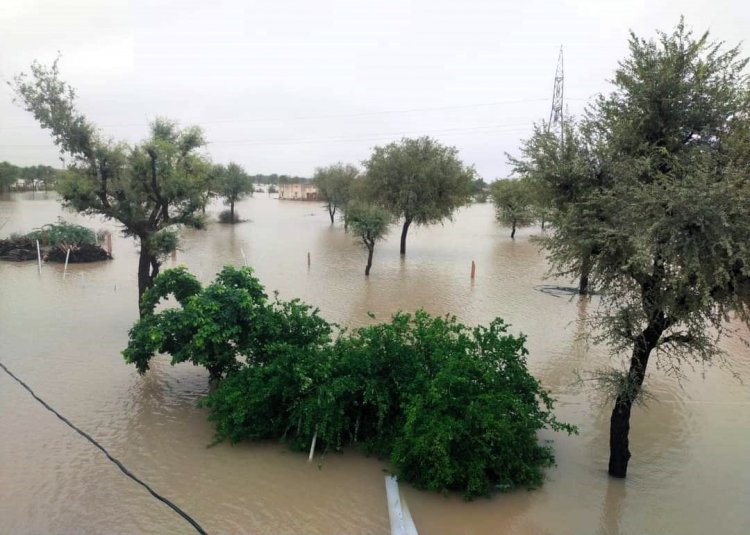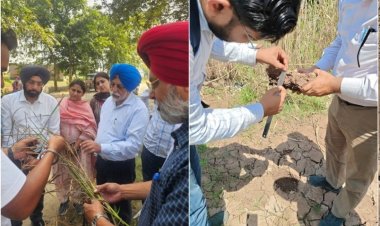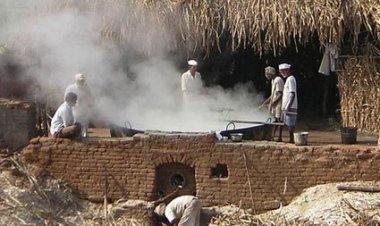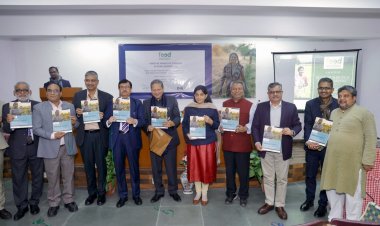Heavy rains cause flood and waterlogging in Punjab, Haryana and Rajasthan
The heavy rains across Punjab, Haryana, and Rajasthan have not only disrupted daily life but also brought temperatures down by 2 to 6 degrees Celsius below normal in many areas. While this provided some relief from the summer heat, the severe weather conditions have raised concerns over the potential long-term impact on agriculture and infrastructure.

Continuous and heavy rainfall on Sunday unleashed widespread disruption across Punjab and Haryana, leading to severe flooding, waterlogging, and chaos in both urban and rural areas. The relentless downpour affected multiple districts, inundating villages, submerging roads, and leaving residents grappling with the aftermath.
In Haryana’s Yamunanagar district, the overflowing Som river breached its banks, flooding several villages. Khanuwala, Bamnoli, Malikpur Bangar, Lalahadi, and Manakpur were among the hardest-hit areas, with water levels rising to 3-4 feet, submerging agricultural fields and forcing many villagers to flee their homes. The State Disaster Response Force (SDRF) was deployed to aid in rescue operations, as residents were evacuated to safer locations.
Punjab also bore the brunt of the heavy rains, with major cities like Chandigarh, Mohali, Ludhiana, Patiala, Amritsar, Hoshiarpur, and Rupnagar receiving significant rainfall. Chandigarh, the shared capital of both states, recorded a substantial 129.7 mm of rainfall, leading to widespread waterlogging. Other cities also reported heavy downpours: Rupnagar with 64 mm, Patiala 62 mm, Ludhiana 57 mm, and Mohali 32 mm, according to meteorological data.
A tragic incident occurred in Punjab’s Hoshiarpur district, where nine people, including eight members of a family, lost their lives after their vehicle was swept away by the flooded Jaijon Choe, a seasonal rivulet swollen by the rains. The victims were travelling in an SUV from Dehra in Himachal Pradesh to Mehrowal village in Punjab’s SBS Nagar district to attend a wedding. Despite warnings from locals about the dangerous water currents, the driver attempted to cross the rivulet, leading to the vehicle being swept away. A team from the National Disaster Response Force (NDRF) was dispatched, and nine bodies have been recovered, including five females. The incident underscores the severe risks posed by the heavy rains and the need for caution during such extreme weather conditions.
Haryana’s Ambala district was also severely affected, recording 82 mm of rainfall, while Gurugram received 77 mm, leading to extensive waterlogging. Key roads, including the Delhi-Gurugram Expressway, were submerged, causing massive traffic jams and leaving commuters stranded. Many vehicles broke down on flooded roads, adding to the chaos as people waded through knee-deep water.
The situation was no less dire in Rajasthan, where torrential rains created a flood-like scenario, particularly in the Karauli district, which recorded an "exceptionally heavy" rainfall of 38 cm. The state has been hit hard over the past two days, with a total of 16 deaths reported — two on Saturday and 14 on Sunday. Jaipur, the state capital, witnessed 118 mm of rainfall in the last 24 hours, leading to severe waterlogging in several areas. The authorities have declared a holiday for schools in multiple districts, including Bharatpur, Karauli, Dausa, and Sawai Madhopur, to prevent any further casualties.
In Rajasthan, the heavy rainfall triggered landslides and house collapses, compounding the disaster. In the worst-hit areas, such as Karauli and Hindaun, floodwaters have inundated low-lying regions, trapping residents in their homes. The Meteorological Department has warned of continued heavy rains, with the monsoon expected to remain active over the next few days in eastern Rajasthan, including Jaipur, Bharatpur, Ajmer, and Kota divisions.
In addition to the localized flooding in villages, the heavy rainfall has disrupted agricultural activities across the affected states, raising concerns over crop damage. The economic impact of the floods is expected to be significant, especially for farmers who are now grappling with submerged fields and potential losses.
State governments across Punjab, Haryana, and Rajasthan have urged residents to exercise extreme caution, avoid unnecessary travel, and stay updated on weather advisories. Emergency services are on high alert, with rescue and relief efforts being prioritized to ensure the safety of affected communities. Authorities are closely monitoring the situation, focusing on providing immediate assistance to those impacted by the floods and preventing further tragedies.
As the region continues to endure this extreme weather event, the resilience and coordination of disaster management teams will be vital in mitigating the impact and ensuring the well-being of all residents. The heavy rains have not only brought temperatures down but have also left a devastating trail of destruction, with the full extent of the damage still unfolding.



 Join the RuralVoice whatsapp group
Join the RuralVoice whatsapp group








































